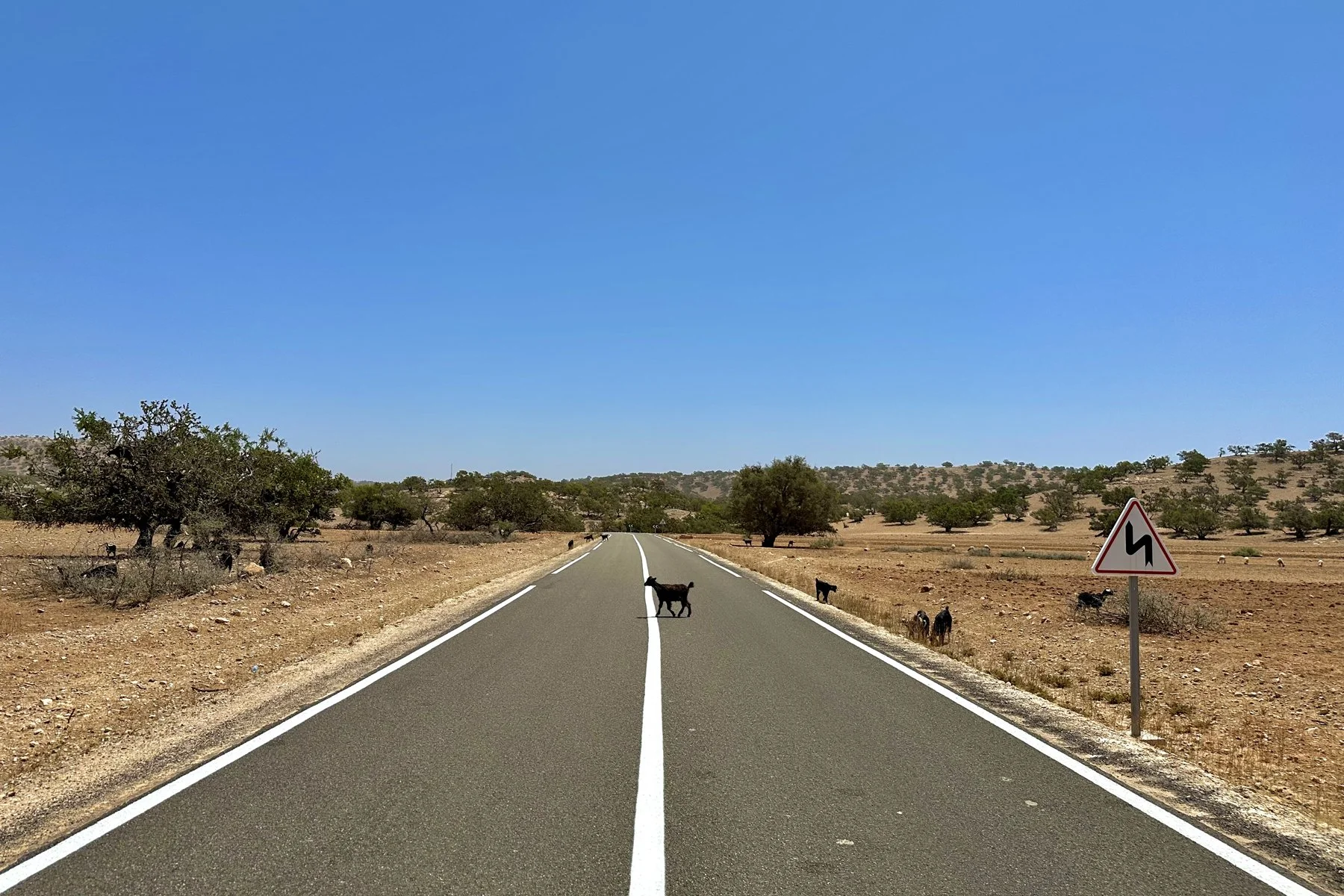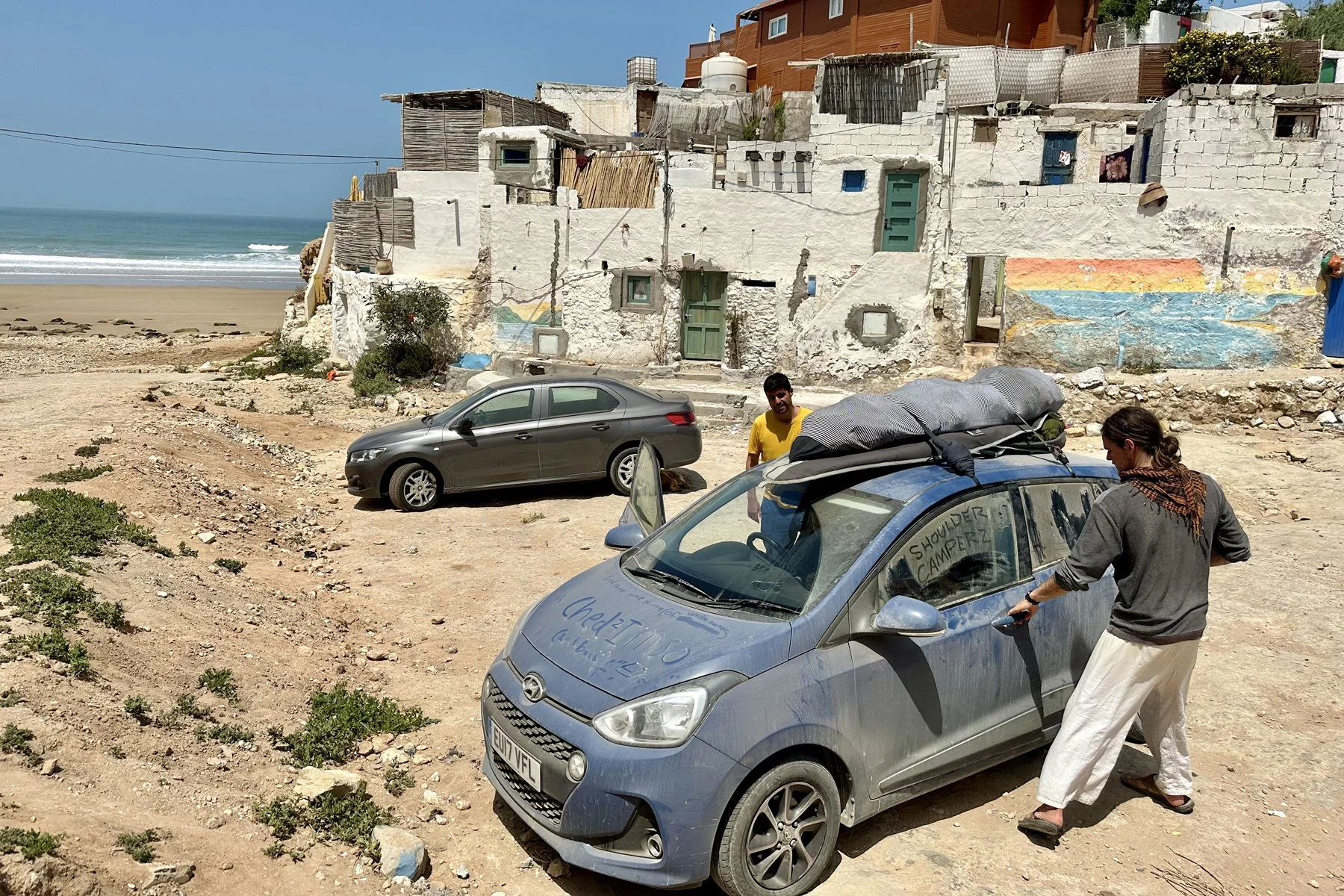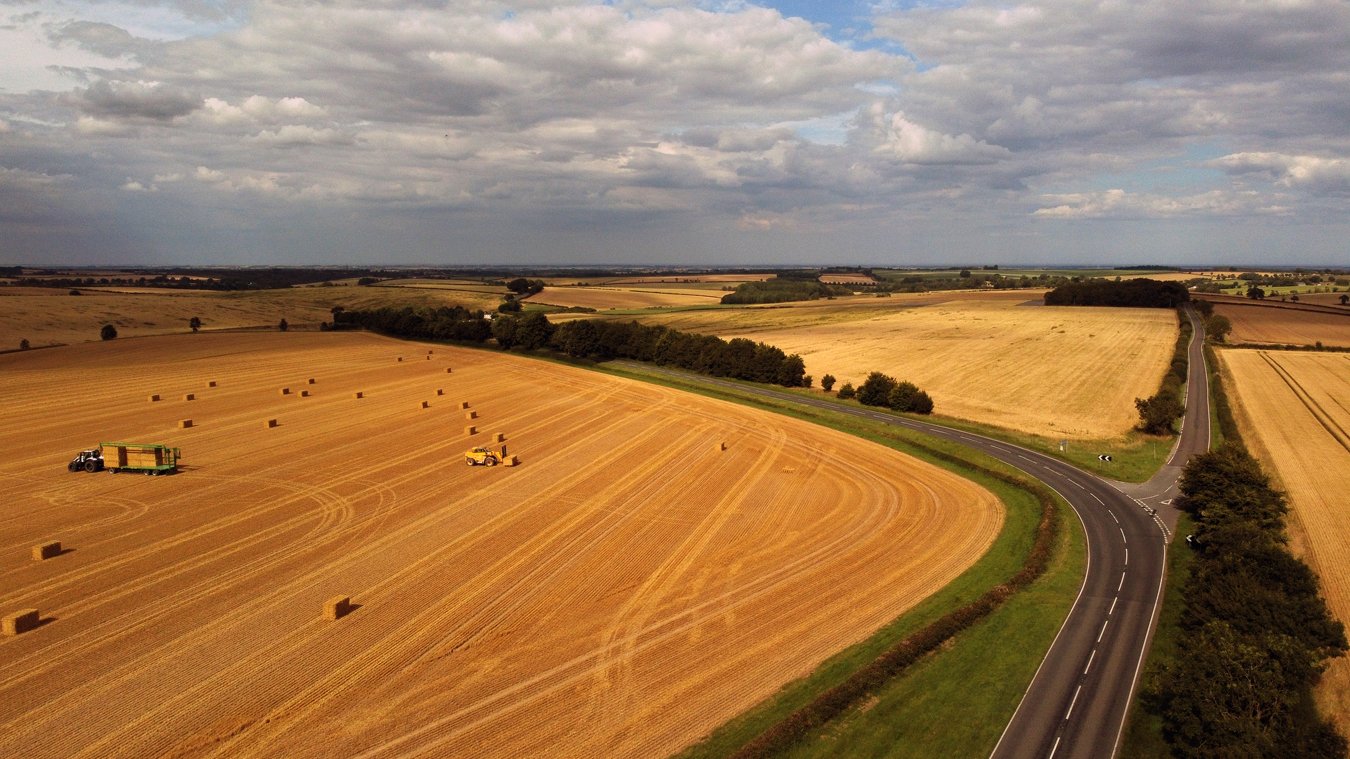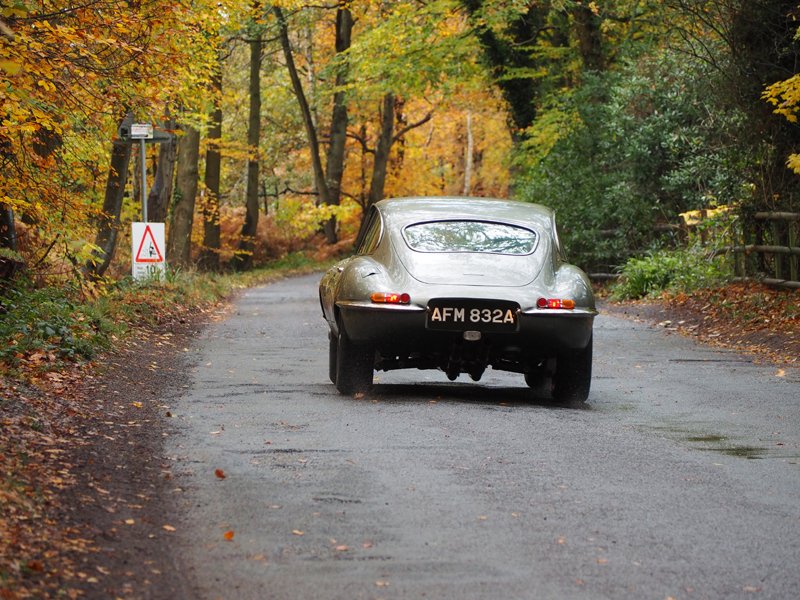Detour #254: London to Africa and Back in a Budget Hatchback
Griff Gough-WaLters drove a tiny Hyundai i10 2,500 miles from London to North Africa in four days, and then a month later, did the return journey in three.
As the sun rose over a frosty London commuter town, we loaded up and set off for Dover. Looking back towards the city as we crossed the Thames we took our last glimpse at our Hyundai i10’s natural stomping ground.
We’d been on many surf trips across the South West of England in it and this seemed like just another adventure in Jack’s blue hatchback. Only in the later stages of the journey did the enormity of what this car achieved become clear.
Once across The Channel, we scurried onwards towards Paris, battling rush hour traffic along the Champs-Élysées, the absurdity of what we had embarked on began to sink in and a smile tore across my cheeks. As I carved around the Arc De Triomphe, with the windows down and my two mates in the car beside me, I felt my first ‘pinch me’ moment of the trip. I could barely believe that I was now driving along Paris’ famous cobbled streets, past landmarks I’d only ever seen in French textbooks. We’d just driven to the ‘City of Love’ in an afternoon. We could do anything.
So we piled back onto the motorway heading south towards a camp site, cooked up some dinner and got some rest. It was -2 degrees when we woke up, and the battery was flat on the car. Not a great start to our second day on the road. Thankfully after a quick push start we were away, blasting towards the Spanish border. There we saw the scars of forest fires from previous summers which were a chilling reminder of the climate crisis. Without wishing to sound too self righteous, it was interesting to calculate how by choosing to travel overland we were contributing far less carbon to the atmosphere than the few hours on a plane would have.
As we approached the Basque region, we spotted our first sign advertising tickets for the ferry to Morocco, still some 1,500 miles away. Basque country was magical, and our campsite on a headland overlooking the sea was sensational. We started our third day on the road with a brisk surf on a busy beach in Northern Spain, an omelette and a couple of espressos. We pointed the nose of the i10 towards Madrid and gunned it. After a few hours, we were tempted by the rich looking soil and ancient grape vines in Rioja so we pulled in for a glass of red and a plate of bread in a sun drenched square. It was sublime, and we could have very easily stayed to get quite merry, but we had serious work to do. There was a continent to cross.
Our detour into Rioja had cost us some time so making it to Madrid that evening looked a little ambitious. Instead, we headed up to a ski resort just outside the city. It wasn’t a good sign when we passed a patch of snow on the roadside, but still we climbed higher on a hypnotic ribbon of tarmac through the forest. The final stretch up to the mountain refuge we were aiming for was closed, so in the dusk light we scampered up on foot with our tents and bedding. Eventually we found the building where we’d hoped to take shelter for the night. Spain has lots of these refuges across its mountains to provide hikers basic shelter and a bed on a first come first served basis.
Dawn broke early, revealing the best sunrise of the trip. A lazy golden yolk of light bathed us as we got the fire crackling and rustled up some coffee. The final stretch of the journey was underway and we ploughed onwards past the snow-capped peaks in Granada and down onto the south coast of Spain. As signs for Malaga and Marbella began appearing we were reminded of the scale of our journey. Many Brits board budget airlines bound for these places for their holidays, we’d just driven here.
Searching for a campsite we ventured down a rough track towards the beach. Rounding a corner, the vista opened up and we were met with our first glimpse of the rock of Gibraltar. It was a magnificent sight. Before boarding the ferry the following morning, we had a look around this glorious abnormality, indulging in a full English fry up before setting off around the bay to the port of Algerciras. Bubbling with anticipation, we boarded the ferry and went up to the top deck to wave goodbye to Europe.
Adventure is about leaving the known world behind and exploring somewhere new. To that end, the ferry across the Mediterranean is adventure personified. The air is thicker here. Laden with the smell of diesel fumes and sea spray it tells a story of a cultural crossroads between east and west. Families returning home, farmers delivering stock and us: a trio of ambitious hopefuls in a blue hatchback.
Bumping down the ferry ramp we arrived onto African ground, but a Spanish territory: Ceuta. A short drive later we crossed the border into Morocco and quickly climbed into the lush green mountains on our way to Tangier. The atmosphere in the i10 was jubilant: we’d made it! Filling up with our first Moroccan tank of sans plomb, with the Spanish coastline still in sight, we whooped and hollered at how far we’d come.
After a few nights in Tangier we cruised down to Chefchaouen, the blue city, before heading onwards to the Atlas Mountains. When we eventually arrived in the village of Imlil and parked up, we were exhausted. However, the sight of a little hatchback with a British numberplate in a mountain village in Morocco with a donkey next to it filled me with a great sense of achievement.
Later we journeyed to the surf villages of the south west of Morocco where we stayed for a month. There the i10 scampered along sandy beach tracks, into sand dune areas and provided handbrake turn practice for the group.
Soon enough though it was time to head home, and the return journey was as epic as it was ambitious. We were going to need to complete the trip in three days and this gave rise to the most intense 48 hours of my life, involving setting off from the bottom of Spain at dawn, and arriving at a nightclub in Bordeaux at 3am.
Fueled by Red Bull, we were then back on the road at 5am and arrived at the white cliffs on France’s north coast by 9pm. A dash across the channel the following morning and before I knew it I was driving through central London in a car still covered in Moroccan dust. In terms of core life moments, that is up there near the top.
When dreaming up a perfect road trip vehicle, I doubt you would put a 2017 Hyundai i10 at the top of your list. Sure, a Land Cruiser may have been more comfortable, and look like a proper overlander in the photos, but an i10 did just fine. In fact, it did more than just fine. It bossed it! It was a plucky morsel of metal that crossed a continent. It wasn’t designed to, but it did it. And it did it packed to the rafters with camping gear, two surfboards and, for a brief time, 5 excited graduates on board. Before you ask, no, that was not comfortable, but boy was it epic.
As road trip enthusiasts, we search for the perfect car, but the best adventure vehicle is the one you can get in right now and set off tomorrow.
So go forth adventurers! We drove 5,000 to miles Africa and back in a tiny Hyundai, what’s your excuse?
Words & Photography Griff Gough-Walters| Instagram






































It’s the end of the road for 2025 and a chance to reflect on the best road trips of the year.